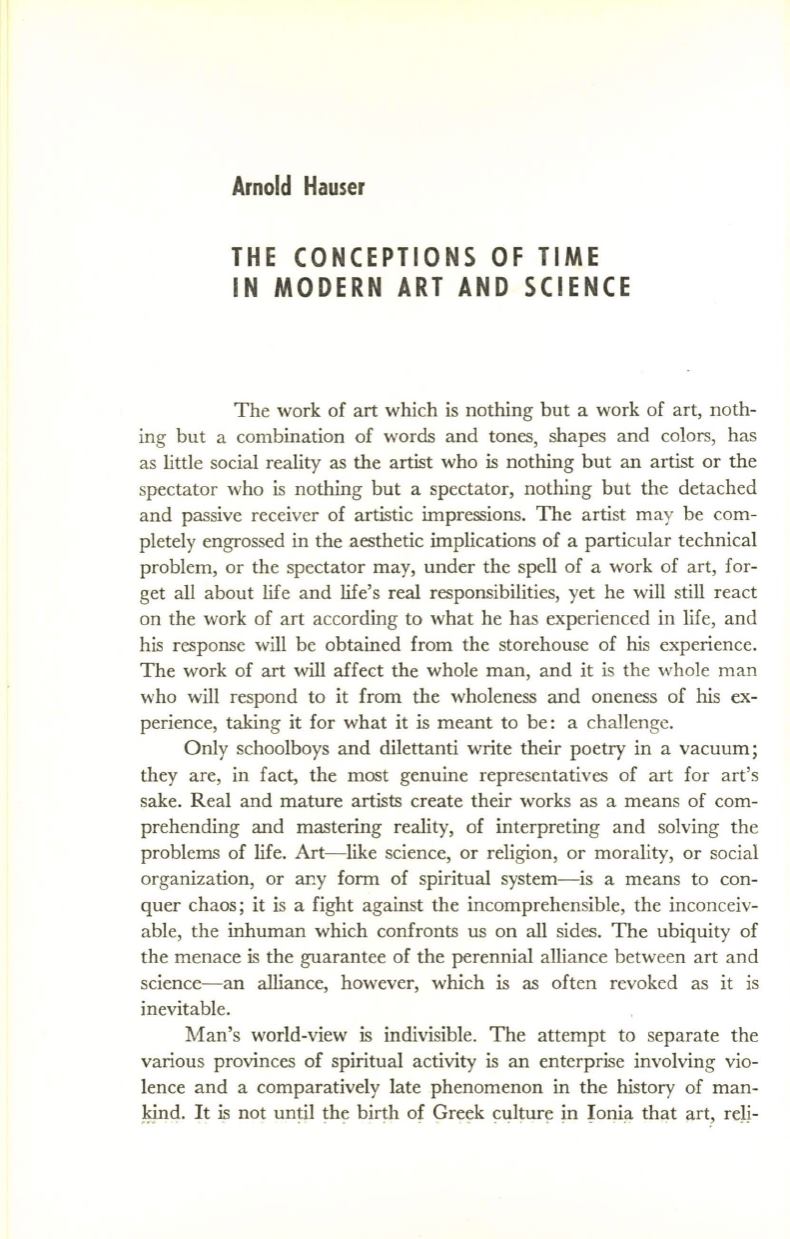
Arnold Hauser
THE CONCEPTIONS OF TIME
IN MODERN ART AND SCIENCE
The work of art which is nothing but a work of art, noth–
ing but a combination of words and tones, shapes and colors, has
as little social reality as the artist who is nothing but an artist or the
spectator who is nothing but a spectator, nothing but the detached
and passive receiver of artistic impressions. The artist may be com–
pletely engrossed in the aesthetic implications of a particular technical
problem, or the spectator may, under the spell of a work of art, for–
get all about life and life's real responsibilities, yet he will still react
on the work of art according to what he has experienced in life, and
his response will be obtained from the storehouse of his experience.
The work of art will affect the whole man, and it is the whole man
who will respond to it from the wholeness and oneness of his ex–
perience, taking it for what it is meant to be: a challenge.
Only schoolboys and dilettanti write their poetry in a vacuum;
they are, in fact, the most genuine representatives of art for art's
sake. Real and mature artists create their works as a means of com–
prehending and mastering reality, of interpreting and solving the
problems of life. Art-like science, or religion, or morality, or social
organization, or any form of spiritual system-is a means to con–
quer chaos; it is a fight against the incomprehensible, the inconceiv–
able, the inhuman which confronts us on all sides. The ubiquity of
the menace is the guarantee of the perennial alliance between art and
science-an alliance, however, which is as often revoked as it is
inevitable.
Man's world-view
is
indivisible. The attempt to separate the
various provinces of spiritual activity is an enterprise involving vio–
lence and a comparatively late phenomenon in the history of man–
~~nd.
It is not until
!h~
bir!h of Greek
~u1tur~ ~n
Jonia that art? reJi-


